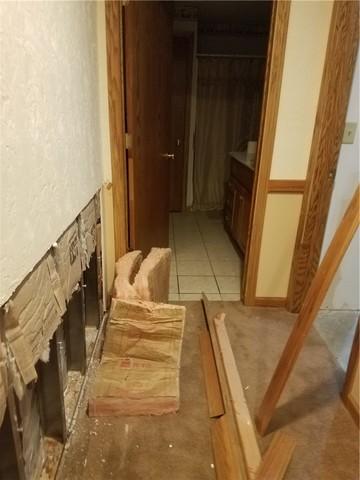
Cutting Finished Walls to Inspect Damage
Water problems in finished basements can be tricky because the finishings hide water damage for quite a while. This section of wall was cut back and the floor was pulled up during the homeowner's DIY attempt and you can see staining on the floor indicative of water.
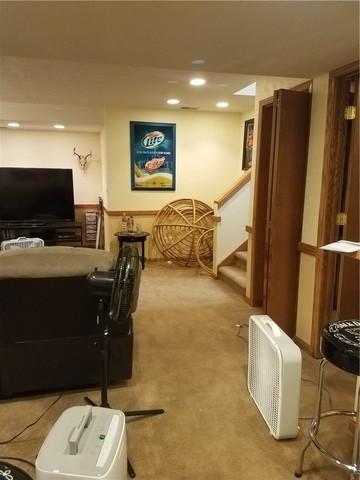
Fans Don't Help Wet Basement
We see it all the time - attempts to dry out a wet basement with fans. Anything is better than nothing, but these don't do much.

Vacuuming Water in the Basement
Another common theme in wet finished basements is the vacuum. Sometimes it's a shop vac, sometimes a wet/dry vac like the one seen here. Think of all the time you're wasting vacuuming water.
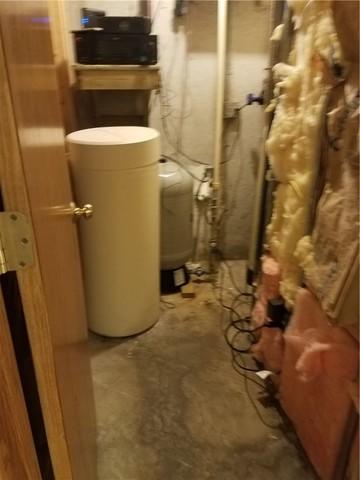
Water Damage in Basement
More staining on the floor around fixtures indicates long term water damage.
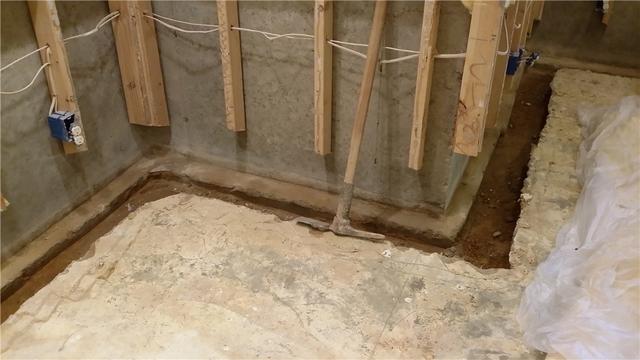
Removing the Floor for Installation
As you can see, we do a full perimeter system when needed - that means every corner, twist, and turn.
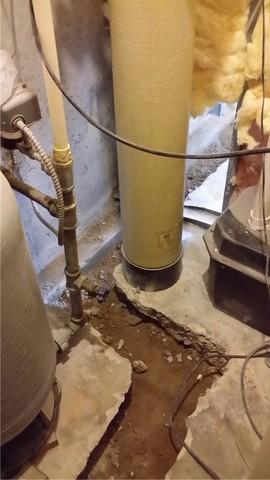
Installing WaterGuard Around Fixtures
As you can see from the path we created by removing concrete, we can install WaterGuard around fixtures like pipes, posts, and appliances.
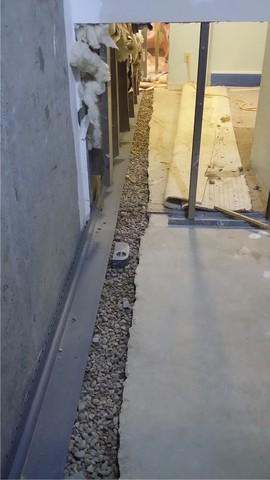
WaterGuard Installation in Progress
We pour drainage stone to help the WaterGuard collect and direct water without getting overwhelmed. Note the inspection port about halfway down this photo - that will help our service techs access the system for annual maintenance.

TripleSafe Sump Pump Removes Water Efficiently
The existing sump pump wasn't faulty, it just wasn't enough to take care of the problem, especially considering there was no perimeter system in place to route the water. Adding a TripleSafe will keep the water moving - out of the house.
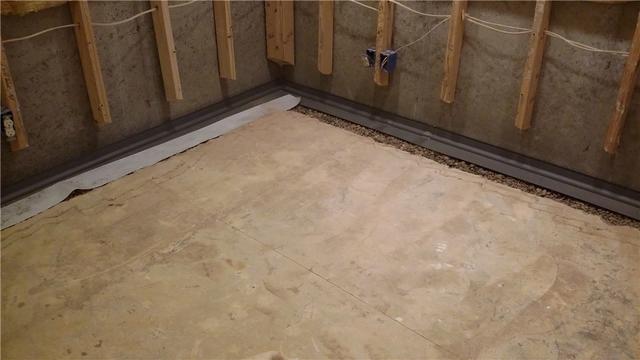
Securing WaterGuard
Once the WaterGuard is in place, we use special tape to secure it in place (left). That way we can pour new concrete without compromising its position.
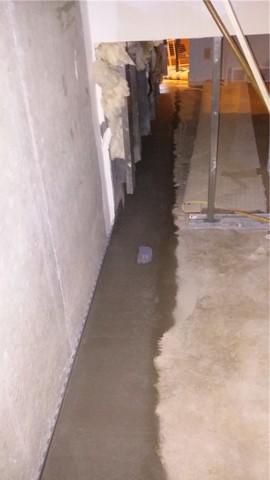
New Concrete Restores Basement Floor
Once everything is in place, we pour new concrete to replace the section of floor we had to remove for installation. Once it dries, there will be little evidence - except the basement will be dry.

Waterproofing a Finished Basement
Luckily the carpet in this area wasn't affected by the water, so we were able to simply pull it back to complete the work and it can go back in place. Carpet still isn't the best choice for a basement with water problems as it can harbor mold and mildew. We offer many waterproof floor tile options, including a carpet finish.
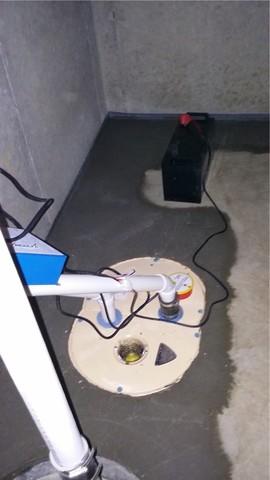
TripleSafe Provides Guaranteed Protection
In addition to three powerful sump pumps, the TripleSafe can run one pump on a battery backup. Which means during a power outage - like the kind that occur in heavy rainstorms - your sump pump is still on the job.
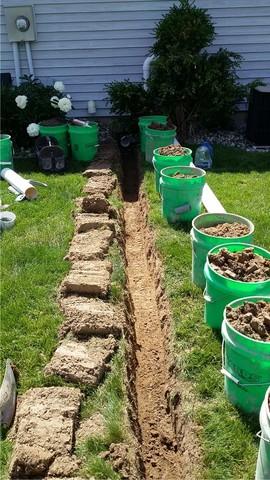
Burying the Discharge Line for Convenience and Safety
The LawnScape outlet (next photo) allows us to bury the discharge line, eliminating trip hazards and having to look at a big pipe every day. Here, the lawn is prepared by carefully removing sod to replace after the line is in place.
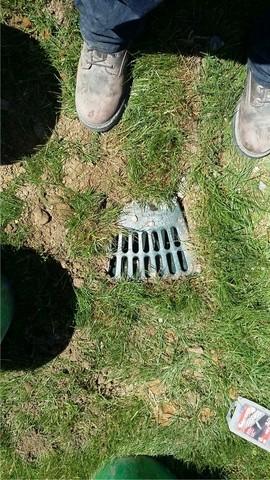
Lawnscape Outlet Disperses Water
By attaching this outlet, we can bury the discharge line without risk of it getting clogged; that means no tripping, having to move it during landscaping, or eyesores.

IceGuard Prevents Water Backups
In the event of a frozen discharge line in the winter, IceGuard prevents water from backing up into the basement by providing a grated escape route.









